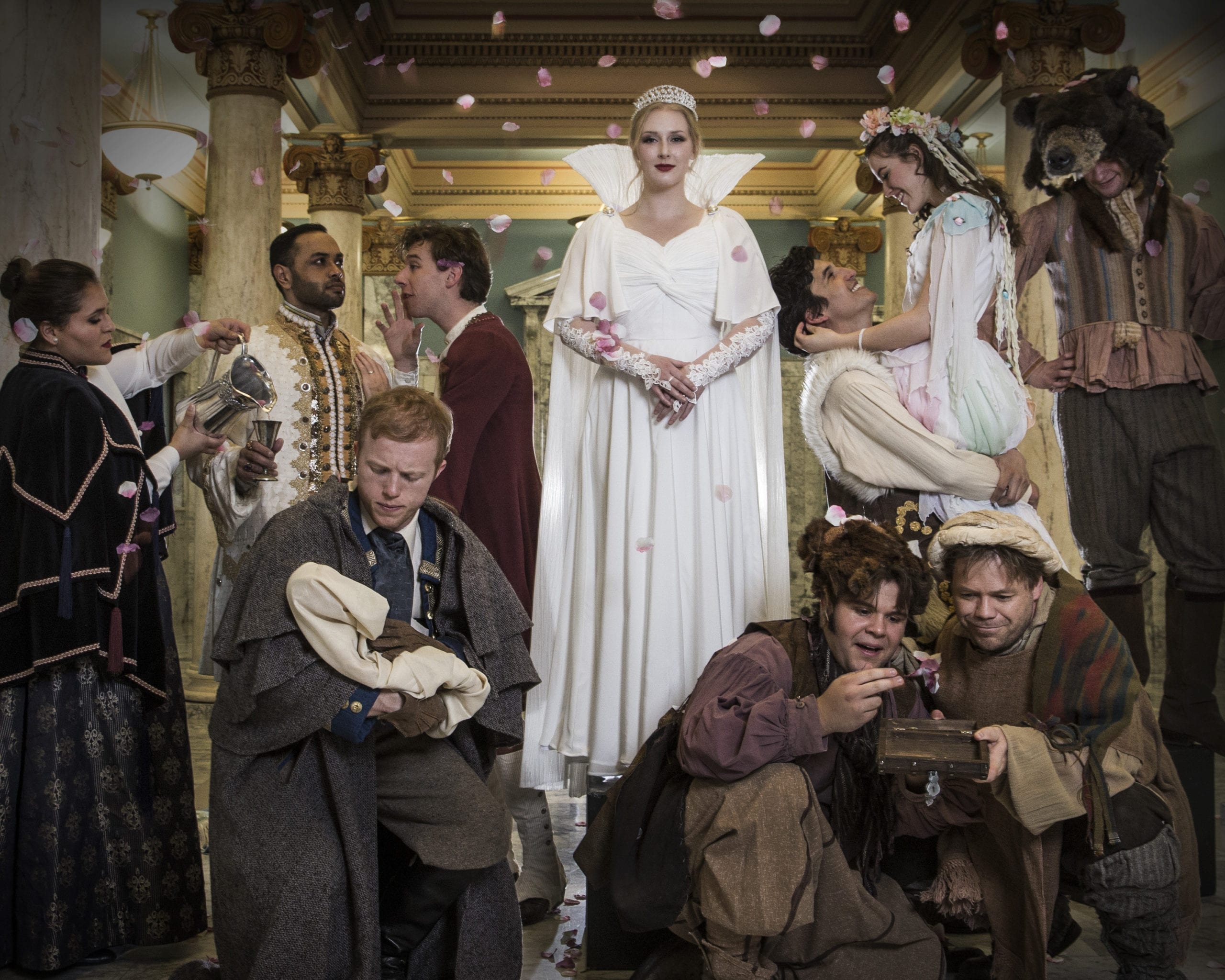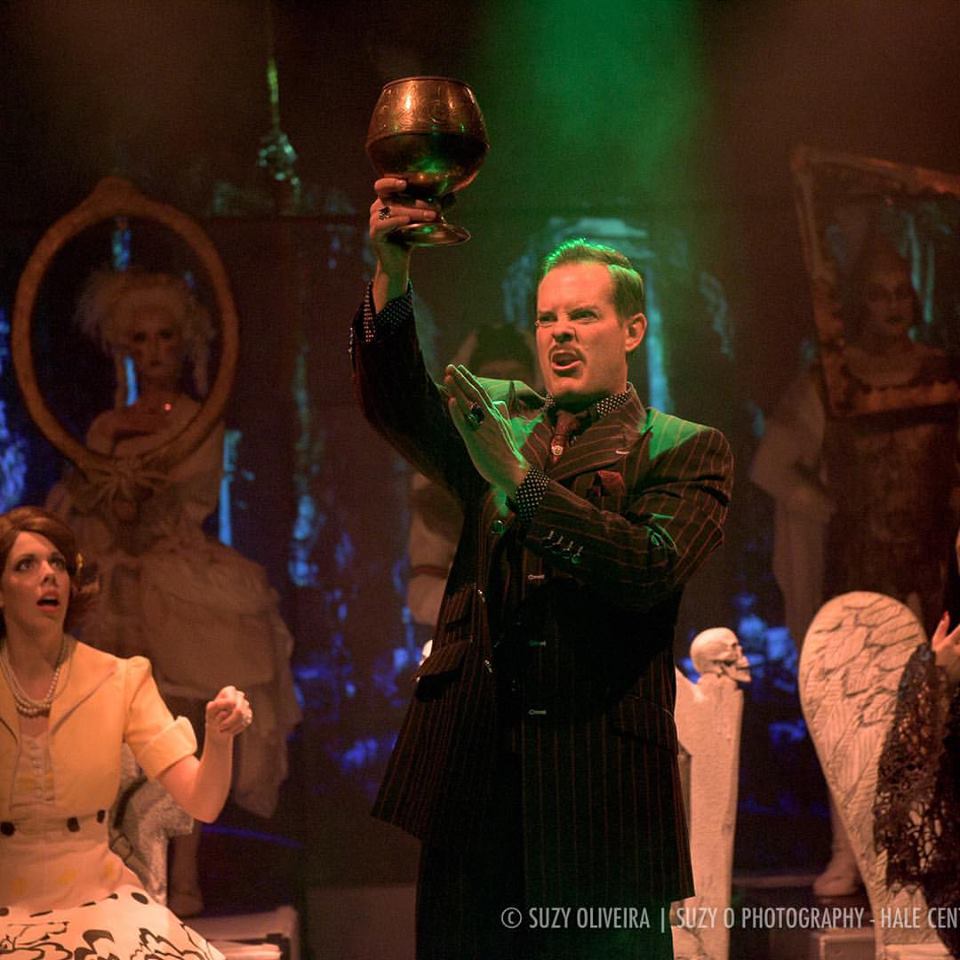PROVO — Labeled as one of Shakespeare’s greatest problem plays, The Winter’s Tale at BYU is an elegantly and intricately designed performance, though not without its own problems. Directed by Lindsay Livingston and boasting a cast of over 25 members, this tale soars and exceeds expectations, while at times leaves the viewer wanting more.
Visually and musically, the production is a tremendous success. The set, designed by Josh Fawcett, was simple in its function but grand in its size. Flowers would move and morph to create different objects, while the main section rotated to become Bohemia and the palace. Mary Farahnakian designed the costumes, and they were a delight for the eyes. Deep textures, rich colors, fringes, lace, patterns, all came together to bring life and light to the world of the play, and it was done splendidly.
With the help of the director, text coach, acting coach, and choreographer, the production seemed to juggle too many good ideas at once. For example, when Perdita is left as a young child in Bohemia during a terrible storm, the cast (and some crew, if I’m not mistaken) burst from the sides twirling, whirling, and moving set pieces in a choreographed “dance” to create the bear that attacks the messenger. It was a unique choice, and it would have fit the style of the show had there been more moments similar to it. The choice seemed out of place and disconnected from the production as a whole.
 However, Lindsay Livingston has a special talent for creating dramatic and poignant stage pictures. At any time throughout the evening, I could have snapped a photo, and I would have been left with a beautiful, striking image. However, there were many times throughout the show where actors turned their back to the audience while delivering a line, and I struggled to hear them—even though I was five rows from the stage.
However, Lindsay Livingston has a special talent for creating dramatic and poignant stage pictures. At any time throughout the evening, I could have snapped a photo, and I would have been left with a beautiful, striking image. However, there were many times throughout the show where actors turned their back to the audience while delivering a line, and I struggled to hear them—even though I was five rows from the stage.
All original music by Patrick Livingston, Liz Maxfield, and Brittany Smalleze was beautiful and fit the mood and feel of the show. The musicians were talented and handled their instruments well, which is nothing less than what I have come to expect from BYU. However, there were a few times when the music seemed out of place or just a touch too loud, though it never became too much of a distraction.
James Luciano played the title character Leontes. Struck by an indefatigable jealousy against a perceived love affair between his wife and King Polixenes (played by Soren Barker), Leontes casts his wife into prison and quickly shuns his newborn daughter. Consumed by his grief, Leontes descends into an unseemingly escapable madness. Luciano’s performance demonstrated a strong grasp on the anger, shame, and frustration but he unfortunately only played these emotions and only at their highest point. Luciano seemed to know one way to convey these feelings: through yelling, screaming, and shouting. Not only that, Luciano’s natural dialect constrained the text, and mixed with the incredibly intense and off-putting choices, left me straining to understand most of his lines. There is drama in subtly and power in silence, and I wish Luciano would have shown the audience more of these levels.
Not everyone was off on opening night, however. A performance worth special mention was delivered by Ann Lopez (as Paulina). Lopez had an excellent grasp on the text and handled Shakespeare’s script effortlessly. It was apparent Lopez knew and understood what each word meant, and she gave an outstanding performance. It’s often been said that an actor must let the character change in some way after each scene. Lopez held true to that saying, as her character was dynamic, three-dimensional, real, and changed before my very eyes.
McKenzie Foster (as Macmillius/Perdita) handled both of her characters with ease and finesse. Her portrayal of Macmillius, a young boy, was easy to believe and endearing. Her interpretation of the love-struck Perdita was innocent, yet strong, a clear indicator of Foster’s understanding of her character. As Leontes’s wife, Hermione, Mackenzie Larsen had a few weak moments in the first act, but shone through when she gave a powerful performance of a monologue as she stood trial before her jealous husband. Her character had just given birth only days before, and Larsen clearly looked like she was in pain. Each moment she stood, breathed, or clutched her chest made me feel pity on poor Hermione and her embodiment of these characteristics were subtle enough to not distract, but also to move the scene along.
This review cannot end without noting the rollicking performance from Patrick Livingston as Autolycus, who played his character with such charm and humor that it was impossible not to like him. His voice effortlessly sailed through the music, while his performance was fresh, funny, and real. I never once felt like I was watching an actor “put on a show.” It’s difficult for some actors to make their performances seem real and new each time, but Patrick Livingston pulled this off without any issue or hesitation.
In all, The Winter’s Tale is certainly a spectacle and a delight to listen and see. Although there are some moments of weakness, this production soars with standout performances and a beautiful design.






